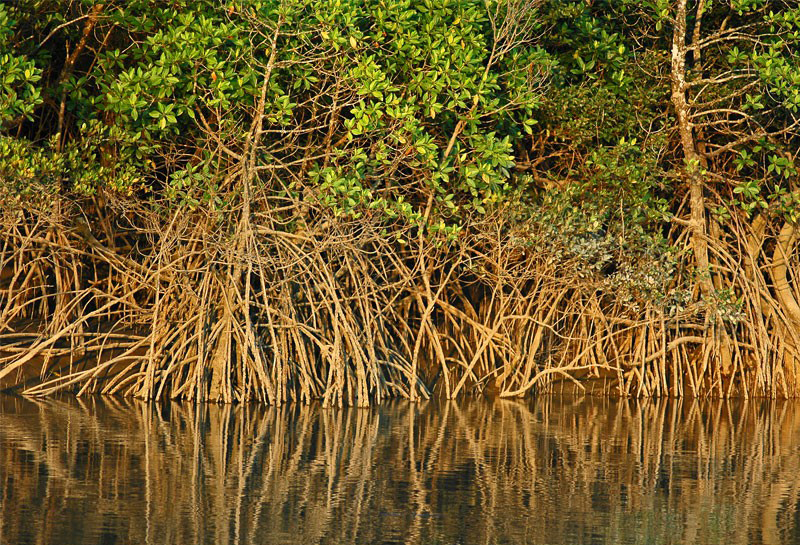What do Saltwater crocodile, Olive Ridley turtle, Gangetic dolphin, Mangrove horseshoe crab and Bengal tigers have in Common. All are endangered species on the brink of extinction, found at Sunderbans in West Bengal, India. 
The tidal jungle is the transition zone between the Ganges and Brahmaputra rivers, where they enter the Bay of Bengal. The Sundarbans is one of the largest tracts of wilderness, it is home to nearly 400 Bengal Tigers. Sunderbans is also the world’s largest intact halophytic (salt-tolerating) mangrove forest.
The Sundarbans National Park has a Tiger Reserve, and a Biosphere Reserve located in the Sundarbans delta. UNESCO World Heritage Site Sunderbans has the largest expanse of tidal Mangroves forests in the world. Sundar means “beautiful” and ban means “forest” or “jungle”.
The ability to withstand estuarine conditions and saline inundation, owing to tidal effects, is the reason for the flourishing 64 plant species of Mangrove vegetation. The dense mangroves prove how Nature’s designs are unalterable.Low-oxygen soil, slow-moving water, fine sediments, tropical and subtropical latitudes nurture the Mangrove vegetation, which cannot otherwise withstand freezing temperatures.
Indian Eagle will take you to the Sunderbans, see for yourself how trees balance themselves on stilts, which are actually roots. Dense tangle of roots appear to be standing above water. In reality the grip of the roots goes very deep into the ground. These roots resist tidal waves, causing sediments to settle out of water and build up a muddy layer.
The Sunderbans mudflats are formed at the bay and deltaic islands. When low velocity of river and strong tidal currents occur, these flats are exposed during low tides and submerged during high tides.
The Chargheri Char mudflat is refurbished as a tourist spot to attract adventure seekers, collectors, hunters, nature and wildlife lovers, researchers, and tourists.
Medical practitioners have found answers to remedies by using extracts from the plants.The Sterculiaceae and Euphorbiaceae mangroves, Sundari (Heritiera fomes) and looking-glass (Heritiera littoralis) mangroves found here are a rare species.
The advantage of Mangrove forests is that they stabilize the coastline, reduce erosion from storm surges, currents, waves, and tides. Variety of flora and diverse fauna, existing in a unique ecosystem, is the main draw for adventure seekers. Vast expanse of foliage, open skies, high tide playful at the ebb, pristine waters. Reason enough to travel to the Sunderbans Mangroves. Our Lowest airfare to West Bengal is another reason to book with us at www.indianeagle.com.



